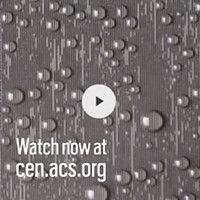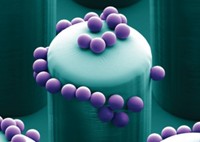Advertisement
Grab your lab coat. Let's get started
Welcome!
Welcome!
Create an account below to get 6 C&EN articles per month, receive newsletters and more - all free.
It seems this is your first time logging in online. Please enter the following information to continue.
As an ACS member you automatically get access to this site. All we need is few more details to create your reading experience.
Not you? Sign in with a different account.
Not you? Sign in with a different account.
ERROR 1
ERROR 1
ERROR 2
ERROR 2
ERROR 2
ERROR 2
ERROR 2
Password and Confirm password must match.
If you have an ACS member number, please enter it here so we can link this account to your membership. (optional)
ERROR 2
ACS values your privacy. By submitting your information, you are gaining access to C&EN and subscribing to our weekly newsletter. We use the information you provide to make your reading experience better, and we will never sell your data to third party members.
Materials
Nanostructures lift the fog
Structural features styled from a block copolymer help make superhydrophobic antifogging surfaces
by Matt Davenport
March 13, 2017
| A version of this story appeared in
Volume 95, Issue 11

To state the obvious, water makes things wet. What may not be so obvious, however, is that even superhydrophobic surfaces can succumb to water’s propensity to moisten. Researchers often fashion tiny hydrophobic bumps, pillars, and protrusions on these surfaces to help keep water away. But they’ve found that fine fog droplets can still slip into the spaces between nanostructures and accumulate into larger drops to wet surfaces. So researchers led by David Quéré of ESPCI Paris launched a systematic investigation into the design of nanotextured hydrophobic surfaces that get around the fogging problem (Nat. Mater. 2017, DOI: 10.1038/nmat4868). By plasma etching self-assembled thin films of a polystyrene-poly(methyl methacrylate) block copolymer, the team created arrays of rods or cones, depending on the etching conditions. The researchers then coated the arrays with hydrophobic fluorinated chlorosilane groups. Water droplets initially grew on all the textured surfaces, but substrates with tightly packed cones eventually kicked the droplets off. The shape and proximity of the cones caused growing droplets to contort dramatically, which generated enough pressure to expel water from the surface with unprecedented efficiency, Quéré explains. He adds that such droplet departure has been observed previously, but “what seems unique with nanocones is the rate of departure is much, much larger than previously reported.” Understanding this behavior could help scientists design better antifogging windshields, mirrors, and solar cells, the researchers say.





Join the conversation
Contact the reporter
Submit a Letter to the Editor for publication
Engage with us on Twitter